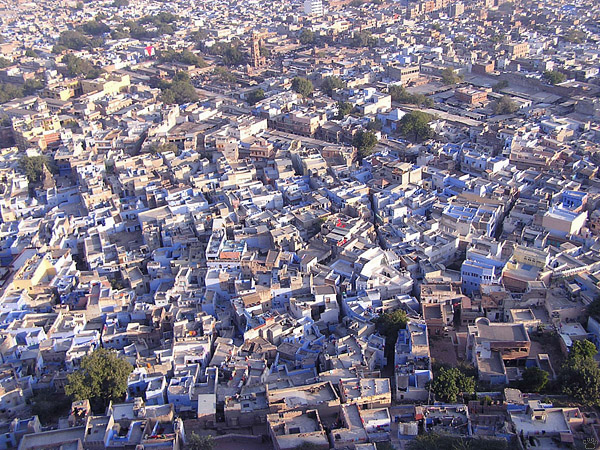
View of the Old City from Meherangarh Fort, Jodhpur.Part 8. Rajasthan: the Blue City
Jodhpur is a large city, once a capital of Marwar Kingdom. Like virtually every city in India, it is now surrounded by a sea of endless urban sprawl, but the older part of it is relatively well-preserved.
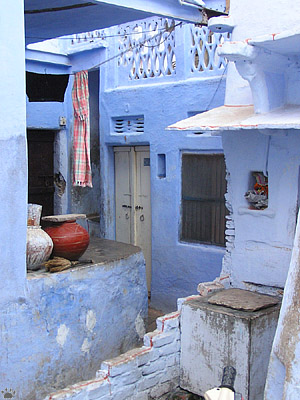
A house in the Old City, Jodhpur. |
The most striking feature of the Old City is the bright blue color of many houses, particularly in the northern sector. It results from adding indigo ti white limewash. Indigo supposedly repels insects such as termites, but I doubt it. |
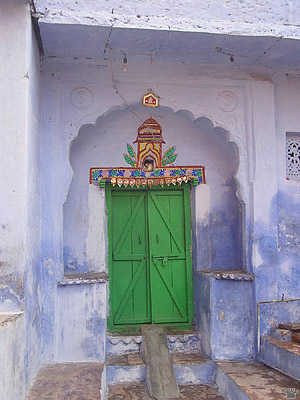
A house in the Old City, Jodhpur. |
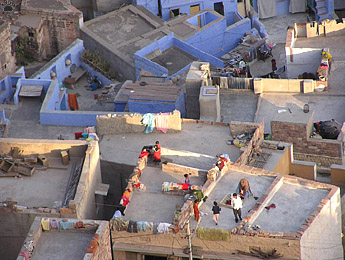 |
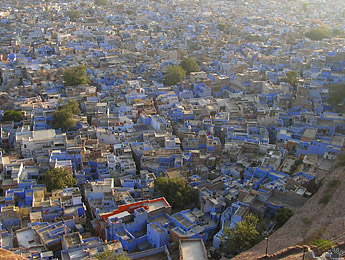 |
| Views of the Old City, Jodhpur. |
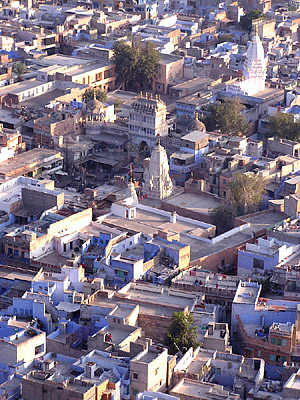
Views of the Old City from Meherangarh Fort, Jodhpur. |
The best views of the Old City are from Meherangarh, Jodhpur's famous fort, one of the world's most impressive fortresses. To enter it, you have to climb a 125 m-high hill and pass through seven gates. The walls are up to 50m/165' high. |
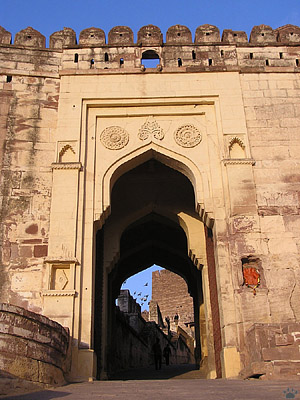
Gates of Meherangarh Fort. |
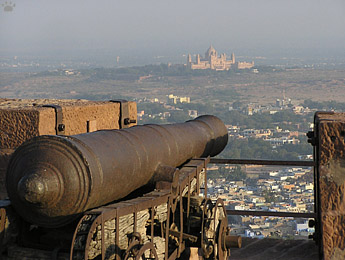
View of Umaid Bhawan (a.k.a. Chittar) Palace from Meherangarh Fort. |
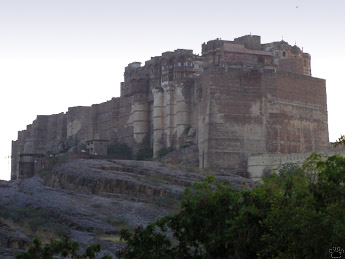
Meherangarh Fort. |
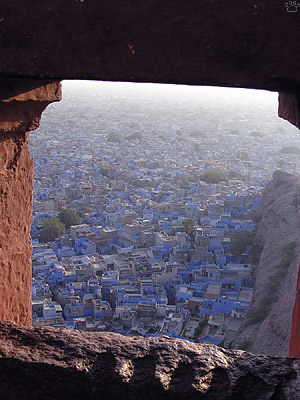
View of the Old City from Meherangarh Fort. |
The fort was considered impenetrable since its construction in 1460, but in 1678 the Moguls sacked the city and forcibly converted its inhabitants to Islam. The king's son then recaptured it after 30 years in hiding. |
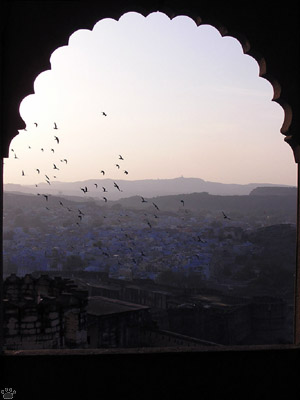
View of the Old City from Meherangarh Fort. |
 |
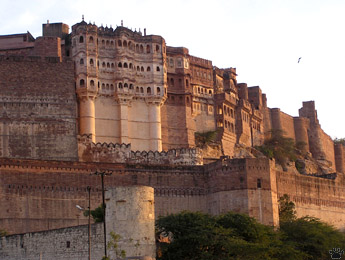 |
| Meherangarh Fort. |
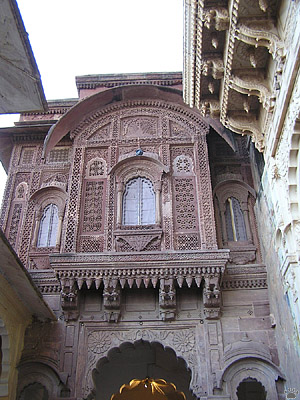
Inside Meherangarh Fort. |
The fort was abandoned in the late 19th century, but in 1972 the current maharaja created a fund to restore it and turn into a museum. Inside are eleven beautiful palaces, most of them now open to tourists. |
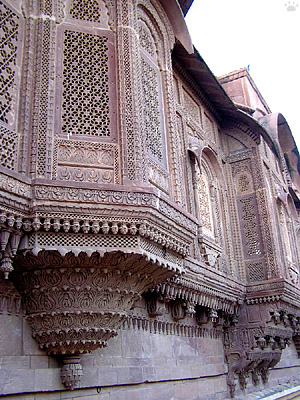
Inside Meherangarh Fort. |
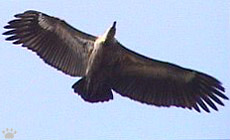 |
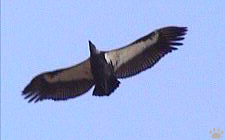 |
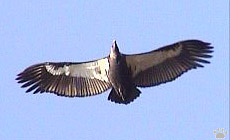 |
| White-rumped vultures (Gyps bengalensis), Kateraniaghat Wildlife Sanctuary, Uttar Pradesh. |
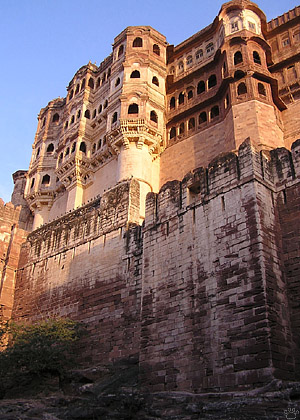
Meherangarh Fort. |
The Fort was once a major breeding site for vultures, who kept Indian cities relatively clean. But in the last ten years, vultures of the Indian Subcontinent have virtually gone extinct, being poisoned by diclofenac, a veterinary drug that remains in cattle corpses. |
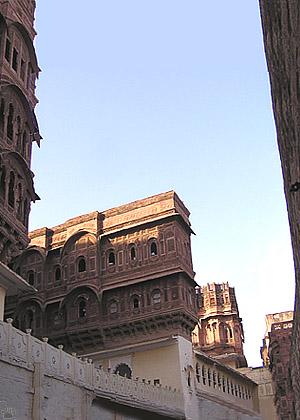
Meherangarh Fort. |
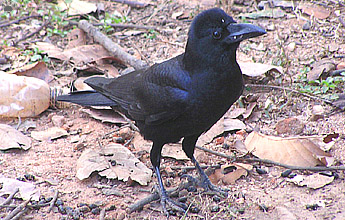
Jungle crow (Corvus macrorhynchos), Jodhpur. |
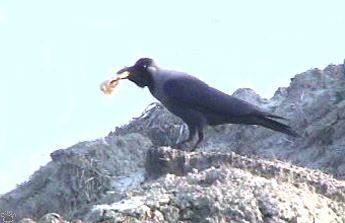
House crow (C. splendens), Jodhpur. |

Oriental honey-buzzard (Pernis
ptilorhynchus), Rajasthan. |
Various eagles, falcons, and hundreds of kites still nest in the Fort, while other raptors use it as wintering site or for rest during migration. As for the sanitary control in Indian cities, it has been taken over by kites, crows, rats and feral dogs. They are much less efficient that vultures in removing rotting cattle carcasses and other carrion. Diclofenac has now been banned in India, but it might be too late for vultures: only a few pairs still remain in remote areas of India and Nepal, and all lowland species are extinct in Pakistan, Bangladesh, Myanmar and most of Indochina. Parsi communities, which traditionally relied on vultures for performing their burial rituals, now attempt to breed them in captivity. |
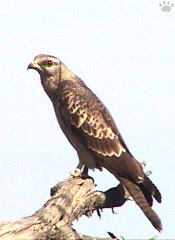
Oriental honey-buzzard, Keoladeo
Ghana National Park, Rajasthan. |

Meherangarh Fort. |
Part 9: Rajasthan (continued)
Back to Part 7
Home
|